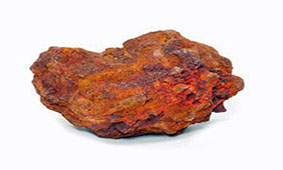
Odisha to Notify Auctions of 21 Iron Ore Blocks by August Third Week

The Notice Inviting Tenders (NIT) in respect of these 21 mines is likely to be issued towards the third week of August. The tentative date for opening of tenders is August 16.
The lease validity of these merchant deposits ends by March 31, 2020. The central mines ministry has given unambiguous instructions to all mineral bearing states to complete the auction formalities for the lapsable blocks by December this year. The plan is meant to ensure a seamless, hassle free transfer of ownership and ensure continuity of operations to avert any critical shortage of iron ore for the end user industries, especially steel and pellet plants that lack resources on their own and their operations hinge on market supplies.
On July 31 this year, the Odisha state steel & mines department had notified eight blocks for online auctions- the roster included four limestone, one limestone, one graphite and two lapsing chromite deposits.
However, auctions of iron ore and manganese blocks were kept in abeyance as the state government awaited the final word from the Union mines ministry on revising the cap on maximum leasehold area of a mineral block. The state government had furnished a reply to the ministry last month after the latter disallowed participation by bidders at auctions who already held 10 square km or more of area in their leases.
In its response, the state government justifying its plea for advocating relaxation of the mine lease area limits argued that SAIL, a central public sector enterprise (CPSE) was in possession of 57 sq km area in Odisha. Hence, the ceiling on mine lease area for a lessee should be revised upwards to at least 58 sq km, the state government reasoned. Odisha’s steel & mines department had putatively delayed the auctions of iron ore blocks to ensure that Tata Steel is not ruled out of the bidding process. Tata Steel was already in possession of more than 50 sq km of lease area and Mineral Auction Rules, 2015 forbade the steel company to bid online for any mining asset.
But since the Mines ministry was yet to respond to the Odisha government’s letter, the state has now decided to go ahead with auctions of iron ore mines.
“Once the auctions process has kicked off means it cannot be halted. Besides, we have to meet the mandated target to prepare the lapsing blocks for auctions and ensure their seamless transfer into new hands”, said a state government official.
Iron ore mines held by major merchant players like Rungta Mines and KJS Ahluwalia were headed for expiry by March 31, 2020. Together, the 21 iron mines whose tenure ended by that period had permits to unearth 79 million tonnes of iron ore. Merchant miners were currently producing 55-60 million tonnes iron ore annually.
The lapsing iron ore blocks are likely to fetch robust premiums at electronic auctions. “Almost all the blocks currently held by merchant miners have the approvals in place and are also endowed with railway infrastructure in the form of sidings. We expect both steel companies and the standalone players in mining to bid aggressively for the assets to be auctioned”, said a leading miner.



Trump weighs using $2 billion in CHIPS Act funding for critical minerals

Codelco cuts 2025 copper forecast after El Teniente mine collapse

Electra converts debt, launches $30M raise to jumpstart stalled cobalt refinery

Barrick’s Reko Diq in line for $410M ADB backing

Abcourt readies Sleeping Giant mill to pour first gold since 2014

Nevada army depot to serve as base for first US strategic minerals stockpile

SQM boosts lithium supply plans as prices flick higher

Viridis unveils 200Mt initial reserve for Brazil rare earth project

Tailings could meet much of US critical mineral demand – study

Kyrgyzstan kicks off underground gold mining at Kumtor

Kyrgyzstan kicks off underground gold mining at Kumtor

KoBold Metals granted lithium exploration rights in Congo

Freeport Indonesia to wrap up Gresik plant repairs by early September

Energy Fuels soars on Vulcan Elements partnership

Northern Dynasty sticks to proposal in battle to lift Pebble mine veto

Giustra-backed mining firm teams up with informal miners in Colombia

Critical Metals signs agreement to supply rare earth to US government-funded facility

China extends rare earth controls to imported material

Galan Lithium proceeds with $13M financing for Argentina project

Kyrgyzstan kicks off underground gold mining at Kumtor

Freeport Indonesia to wrap up Gresik plant repairs by early September

Energy Fuels soars on Vulcan Elements partnership

Northern Dynasty sticks to proposal in battle to lift Pebble mine veto

Giustra-backed mining firm teams up with informal miners in Colombia

Critical Metals signs agreement to supply rare earth to US government-funded facility

China extends rare earth controls to imported material

Galan Lithium proceeds with $13M financing for Argentina project

Silver price touches $39 as market weighs rate cut outlook

















